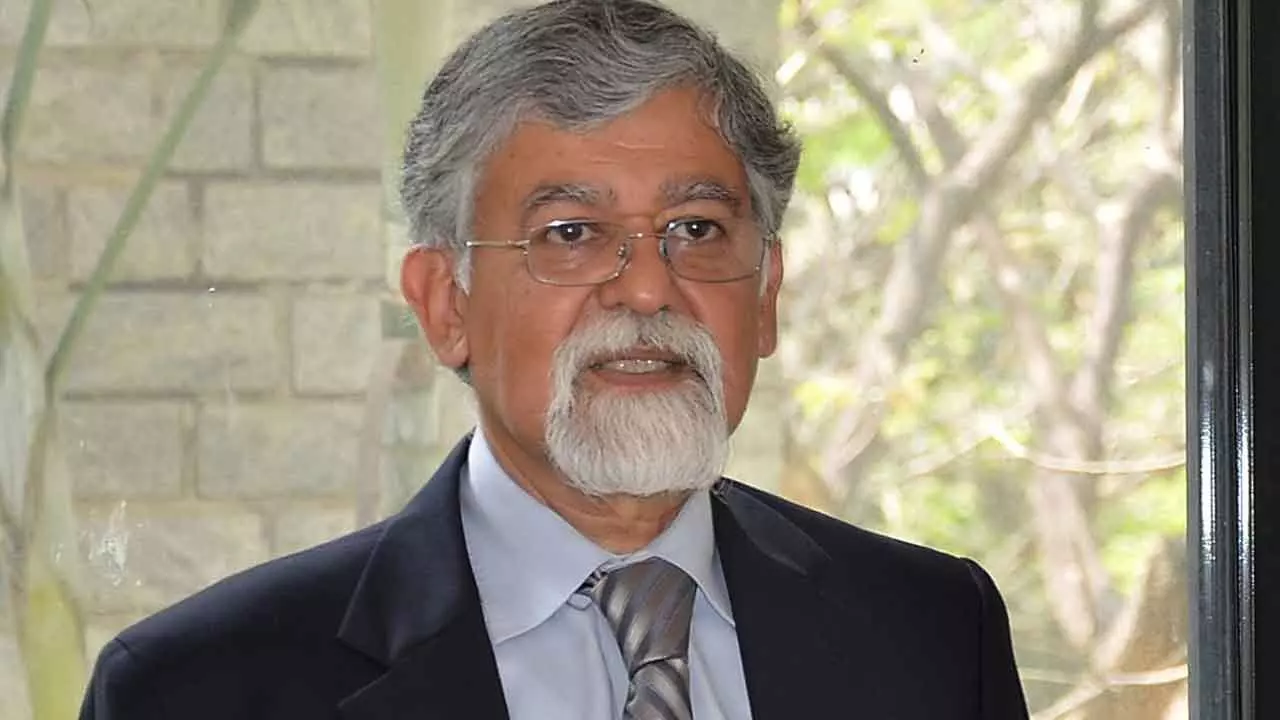Stronger Greenback hammers down Re: NITI member
Arvind Virmani said that RBI’s stated policy doesn’t target a specific exchange rate, but intervenes in market to check ‘excess’ volatility
Stronger Greenback hammers down Re: NITI member

New Delhi: NITI Aayog member Arvind Virmani has said the recent depreciation of the rupee is due to the strengthening of US dollar and opined that in this period of global uncertainty, India should also look at the rupee-yuan rate. In an interview, Virmani said the RBI’s stated policy is that it does not target a specific exchange rate but intervenes in the market to check ‘excess’ volatility. “When we talk about the rupee-dollar rate, there are two elements to it--one is the appreciation of the US dollar... and much of what you see... is now due to the US (dollar) appreciation. “So that is really not under our control, and not something our policymakers have to worry about,” he said.
The rupee has been falling in recent weeks, and on Monday touched an all-time intraday low of 87.29 against the American currency. The other element, Virmani said, is the depreciation with respect to the index, and one way to measure that is to compare it to other countries because the general appreciation of the rupee affects everybody. “As somebody suggested recently, we should look more closely at the rupee-yuan rate, that’s a good suggestion. “Of course, we have to look broadly at our competitors, also in this period of uncertainty,” the NITI Aayog member noted.
The Indian rupee has been under pressure in the last few months but it continues to be the least volatile currency against the US dollar among its Asian and global peers. The reasons for the rupee hitting record lows almost on a daily basis against the US dollar range from a widening trade deficit to a surge in the dollar index after the US Federal Reserve hinted at fewer rate cuts in 2025.
Asked since the finance minister has maintained fiscal discipline, and is aiming to lower debt, does it create room for interest rate cut by RBI, Virmani said,”if we look at our own history and others, it is generally a bad idea to tighten both fiscal and monetary policy together in a period of shocks.So one has to be a lot more targeted. That doesn’t mean one does only fiscal or only monetary, but the coordination has to be carefully done,” he added.
Virmani pointed out that there is some information which suggests monetary and fiscal policies may have been too tight during the first two quarters of the current fiscal year. “So I think that balance has to be restored to what I would say is more appropriate,” he said. Sitharaman, in her Budget for the fiscal year beginning in April, trod a fine line between fiscal prudence and providing a thrust to growth. She not only gave the middle class the biggest-ever tax relief but also unveiled a glide path for reducing fiscal deficit next year and lowering debt as a percentage of GDP by 2031.
The Reserve Bank of India (RBI) has kept the repo rate (short-term lending rate) unchanged at 6.5 per cent since February 2023.

